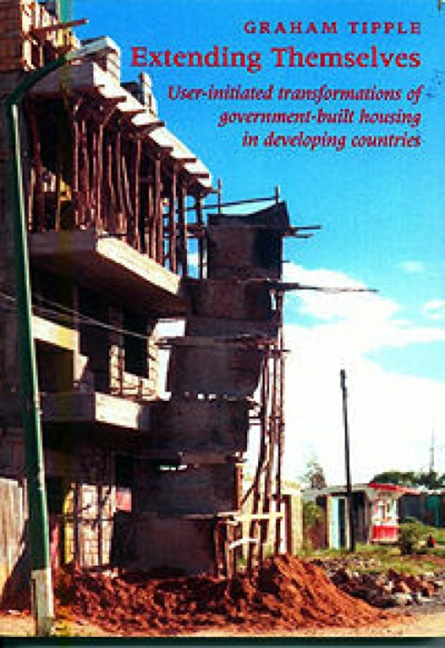 Extending Themselves
Extending Themselves Book contents
- Frontmatter
- Contents
- Acknowledgements
- 1 Introduction
- 2 The housing squeeze
- 3 More than just a dwelling
- 4 The financial element: transformation as an investment
- 5 Sustainability issues
- 6 The transformation process
- 7 The case for transformations
- 8 Policies for enabling transformations
- Appendix 1 Transformations in Bangladesh
- Appendix 2 Transformations in Egypt
- Appendix 3 Transformations in Ghana
- Appendix 4 Transformations in Zimbabwe
- Appendix 5 An assessment of the decision to transform
- References
- Index
Appendix 1 - Transformations in Bangladesh
- Frontmatter
- Contents
- Acknowledgements
- 1 Introduction
- 2 The housing squeeze
- 3 More than just a dwelling
- 4 The financial element: transformation as an investment
- 5 Sustainability issues
- 6 The transformation process
- 7 The case for transformations
- 8 Policies for enabling transformations
- Appendix 1 Transformations in Bangladesh
- Appendix 2 Transformations in Egypt
- Appendix 3 Transformations in Ghana
- Appendix 4 Transformations in Zimbabwe
- Appendix 5 An assessment of the decision to transform
- References
- Index
Summary
Introduction to the Bastuhara Housing, Mirpur, Dhaka
Dhaka is the capital city of the People's Republic of Bangladesh, the largest city in one of the most densely populated countries on earth. It is situated about 150 km above the mouth of the River Ganges. It stands on the northern bank of the Buriganga River about 12 km above its confluence with the Dhaleswari. Although the Ganges delta is low-lying, Dhaka is sited slightly above the general level on the southern edge of an alluvial terrace. Its commanding position and the presence of ground which does not flood in average years led Islam Khan, the Mughal Subahdar, to transfer his capital there from Rajmahal in 1610. Large areas of the present site of the city flood annually and are left clear of official development though many areas do have squatter populations. Only the military area in the spine of the city is never flooded.
Although the urban population is only 15 per cent of the national population, urban areas have severe problems. Old Dhaka, which lies near the north bank of the river, contains some of the most densely populated residential areas anywhere in the world. The population density of the city overall is 3990/km2 (Bangladesh, 1993). A survey in 1993–4 showed an estimated 2 million people living in ‘slums’ and squatter settlements in Dhaka and about 3 million could be classified as living below the poverty line. The likely future growth of Dhaka was estimated to be from 6 million currently to 12 million in 2010 (Bangladesh et al., 1995).
The average monthly income for urban households in Bangladesh was Tk4832 in 1991–2 (£80), considerably higher than the national average of Tk3341 (£56). Some 48.7 per cent of the urban population (6.8 million people) live below the poverty line, defined as the income needed to consume 2122 KCal per person per day and 26.2 per cent live in hard-core poverty, below 1805 KCal per person per day. Although they do not seem to be expressed in money terms in official documents, corresponding per capita monthly incomes appear to be about Tk8800 (£145) and Tk6200 (£100). The lowest 20 per cent of the urban population have only 8 per cent of the urban income while the top 10 per cent have 30 per cent (Bangladesh, 1995).
- Type
- Chapter
- Information
- Extending ThemselvesUser Initiated Transformations of Government-built Housing in Developing Countries, pp. 165 - 203Publisher: Liverpool University PressPrint publication year: 2000


